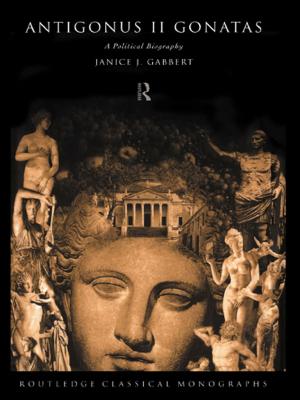Science and the Media
Alternative Routes to Scientific Communications
Nonfiction, Social & Cultural Studies, Social Science, Sociology| Author: | Massimiano Bucchi | ISBN: | 9781134657407 |
| Publisher: | Taylor and Francis | Publication: | October 12, 2012 |
| Imprint: | Routledge | Language: | English |
| Author: | Massimiano Bucchi |
| ISBN: | 9781134657407 |
| Publisher: | Taylor and Francis |
| Publication: | October 12, 2012 |
| Imprint: | Routledge |
| Language: | English |
In the days of global warming and BSE, science is increasingly a public issue. This book provides a theoretical framework which allows us to understand why and how scientists address the general public. The author develops the argument that turning to the public is not simply a response to inaccurate reporting by journalists or to public curiosity, nor a wish to gain recognition and additional funding. Rather, it is a tactic to which the scientific community are pushed by certain "internal" crisis situations. Bucchi examines three cases of scientists turning to the public: the cold fusion case, the COBE/Big Bang issue and Louis Pasteur's public demonstration of the anthrax vaccine, a historical case of "public science." Finally, Bucchi presents his unique model of communications between science and the public, carried out through the media. This is a thoughtful and wide-ranging treatment of complex contemporary issues, touching upon the history and sociology of science, communication and media studies. Bucchi's theories on scientific communication in the media are a valuable contribution to the current debate on this subject.
In the days of global warming and BSE, science is increasingly a public issue. This book provides a theoretical framework which allows us to understand why and how scientists address the general public. The author develops the argument that turning to the public is not simply a response to inaccurate reporting by journalists or to public curiosity, nor a wish to gain recognition and additional funding. Rather, it is a tactic to which the scientific community are pushed by certain "internal" crisis situations. Bucchi examines three cases of scientists turning to the public: the cold fusion case, the COBE/Big Bang issue and Louis Pasteur's public demonstration of the anthrax vaccine, a historical case of "public science." Finally, Bucchi presents his unique model of communications between science and the public, carried out through the media. This is a thoughtful and wide-ranging treatment of complex contemporary issues, touching upon the history and sociology of science, communication and media studies. Bucchi's theories on scientific communication in the media are a valuable contribution to the current debate on this subject.















